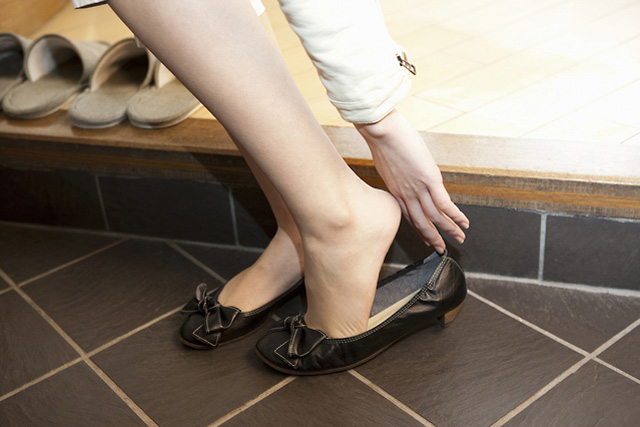What are the reasons for the structural difference in the floor levels at genkan and removing one’s shoes there?
Seen from the foreign students in Japan-Japanese social phenomena from a global perspective-
Updated on Sep 24 2015
Q.When I started living in Japan, I was surprised to see the slight difference in the floor levels at the genkan (small entryway) of a typical Japanese house and people taking off their shoes there. What are the reasons for the structural difference and removing one’s shoes?
A.Genkan, the boundary that divides inside and outside
The answer to your question is largely related to Japan’s climate. To cope with high temperatures and high humidity, especially in summer, a typical Japanese house has a raised floor to allow air circulation. This results in the entryway or genkan (玄関) being at a different level from the interior of the house. Hence, Japanese people customarily take off their shoes at the entryway. The traditional design of Japanese houses also took into account people’s tendency to clearly divide inside and outside. In the past, the homes of aristocrats and samurai (warriors) had genkan entryways, while nagaya (長屋) or single-story wooden row-houses ― narrow living quarters for common people ― did not. Nagaya dwellings usually had earthen floors between the doors and the living sections where residents made things out of straw ― like straw sandals. They then crossed the threshold and took off their footwear before walking through a small wood-floor area into the tatami rooms. This old-time architectural concept can still be seen in modern Japanese houses. Japanese people regard the genkan as the face of each house and therefore many families display paintings, flowers, dolls or landscape photographs there. This is similar to how people in the West decorate fireplace mantels with family photographs and other things.


published in The Japan News on 24/9/2015

